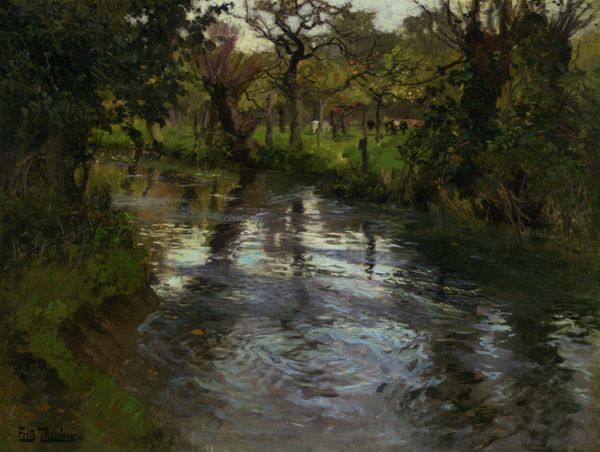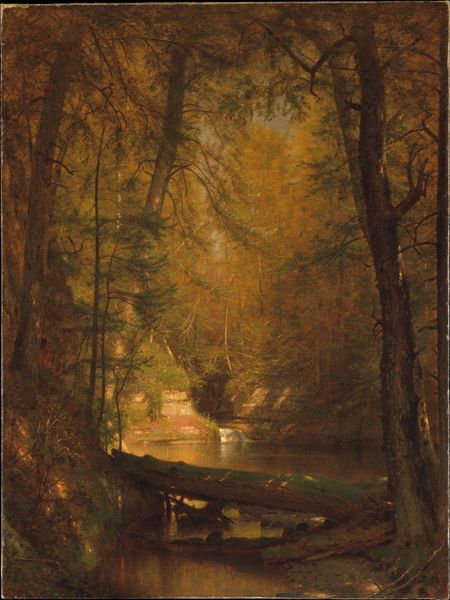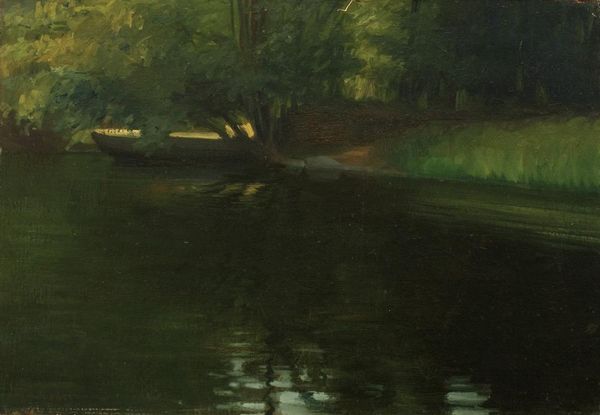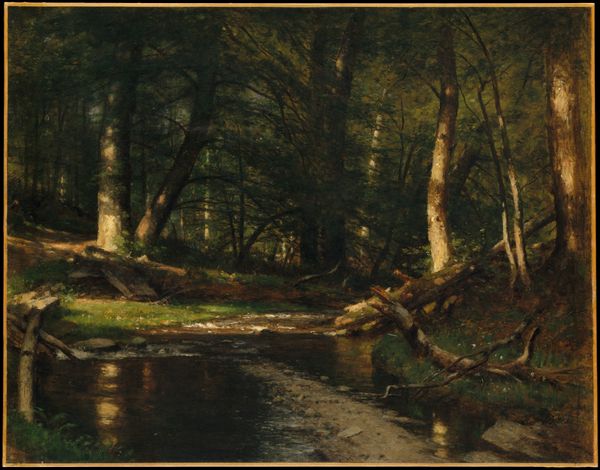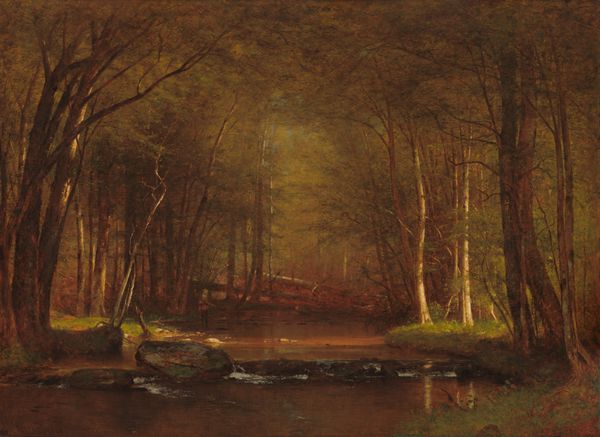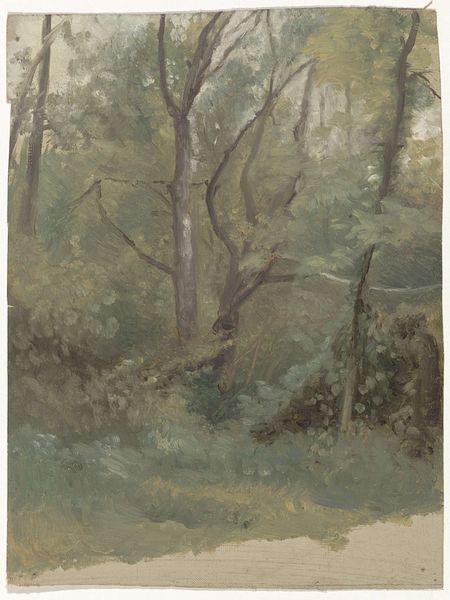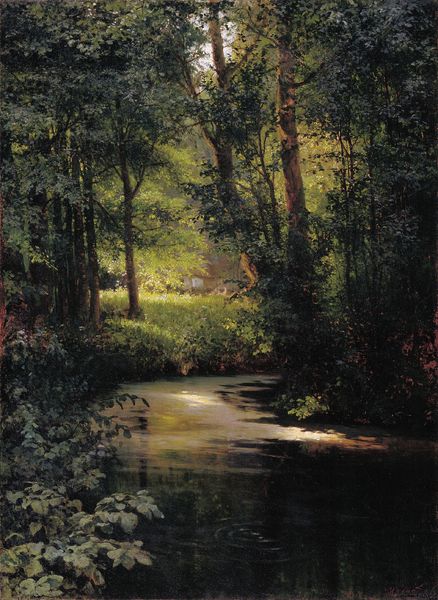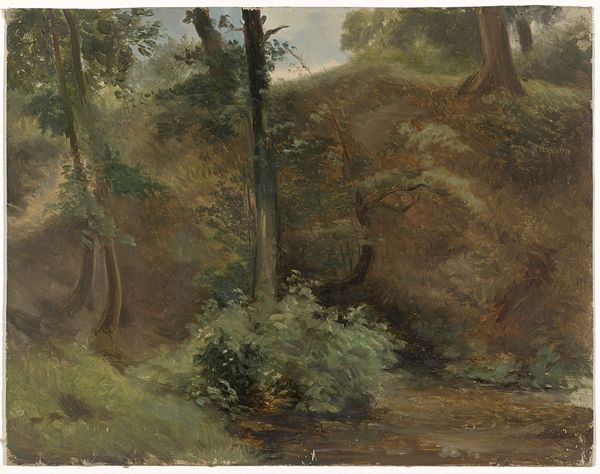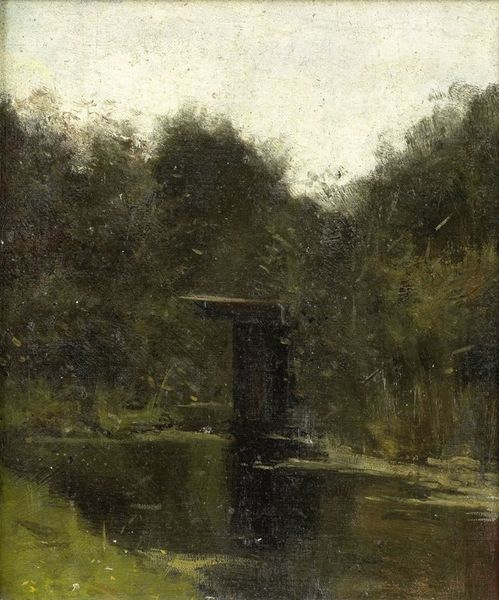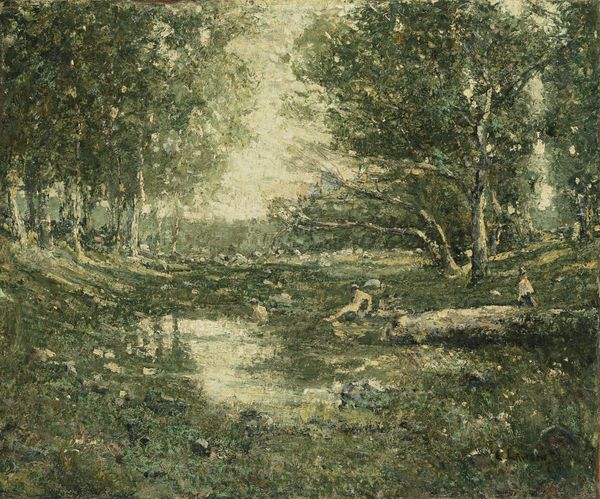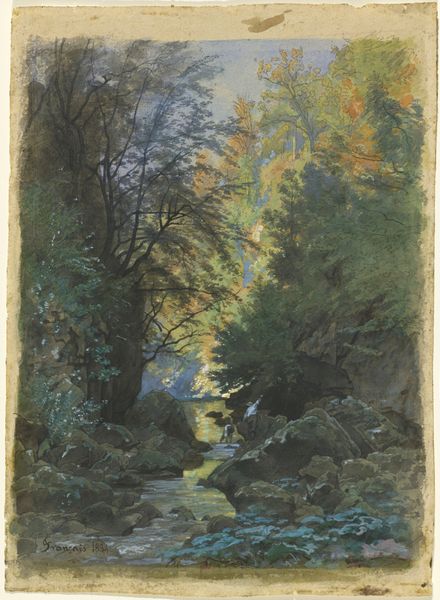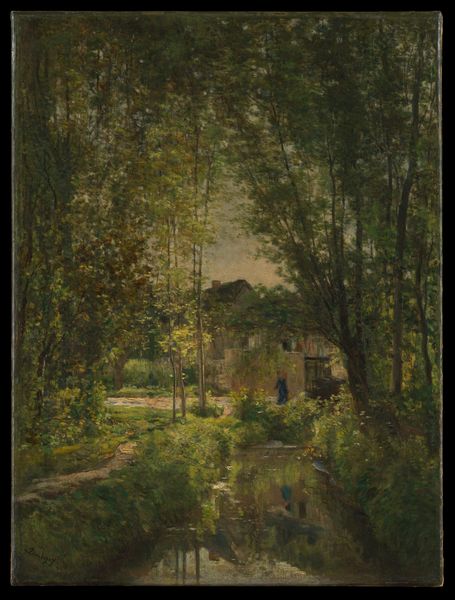
Dimensions: height 30 cm, width 23.4 cm, depth 7.5 cm
Copyright: Rijks Museum: Open Domain
Curator: This is Matthijs Maris' "Brook in the Woods near Oosterbeek," circa 1860, currently held at the Rijksmuseum. Editor: My first impression is how somber and dense it feels; the thick, almost palpable atmosphere really comes through. Curator: Maris was associated with the Hague School, a movement reacting against academic art by focusing on the Dutch landscape. His work here really highlights the group’s connection with Romanticism. It’s about emotional resonance as much as depiction. Editor: It's interesting, focusing on Maris’ artistic choices as a product of place. I wonder about the pigments used, maybe sourced locally? The browns and greens feel earthy. And the visible brushwork—it speaks of a direct, engaged process, painting en plein air, battling the elements perhaps. Curator: Indeed. Consider how this period also witnessed industrialization transforming the landscape. Artists like Maris helped define the nation through idyllic scenes, even as that reality was disappearing. Editor: I'd say the very act of applying oil paint, a manufactured substance, to create the illusion of raw nature exposes the layers of human intervention, doesn't it? The labor is right there, in each stroke. How can we separate the painting from this work? Curator: Absolutely, and the perspective pulls you into the composition. It almost feels claustrophobic in the most sublime way, mirroring the sentiments about losing an untouched land. Editor: For me it comes down to a tension. He wants to evoke nature’s inherent qualities but can only use heavily processed materials to get at what can be viewed only from a highly mediated point of view. Curator: So you think there’s an element of contradiction inherent within landscape painting? Editor: Perhaps, it really makes you appreciate the hand and intent that shaped the brook we're looking at today. Curator: It seems Maris provides not just a landscape, but a window into the anxieties of his time, beautifully rendered.
